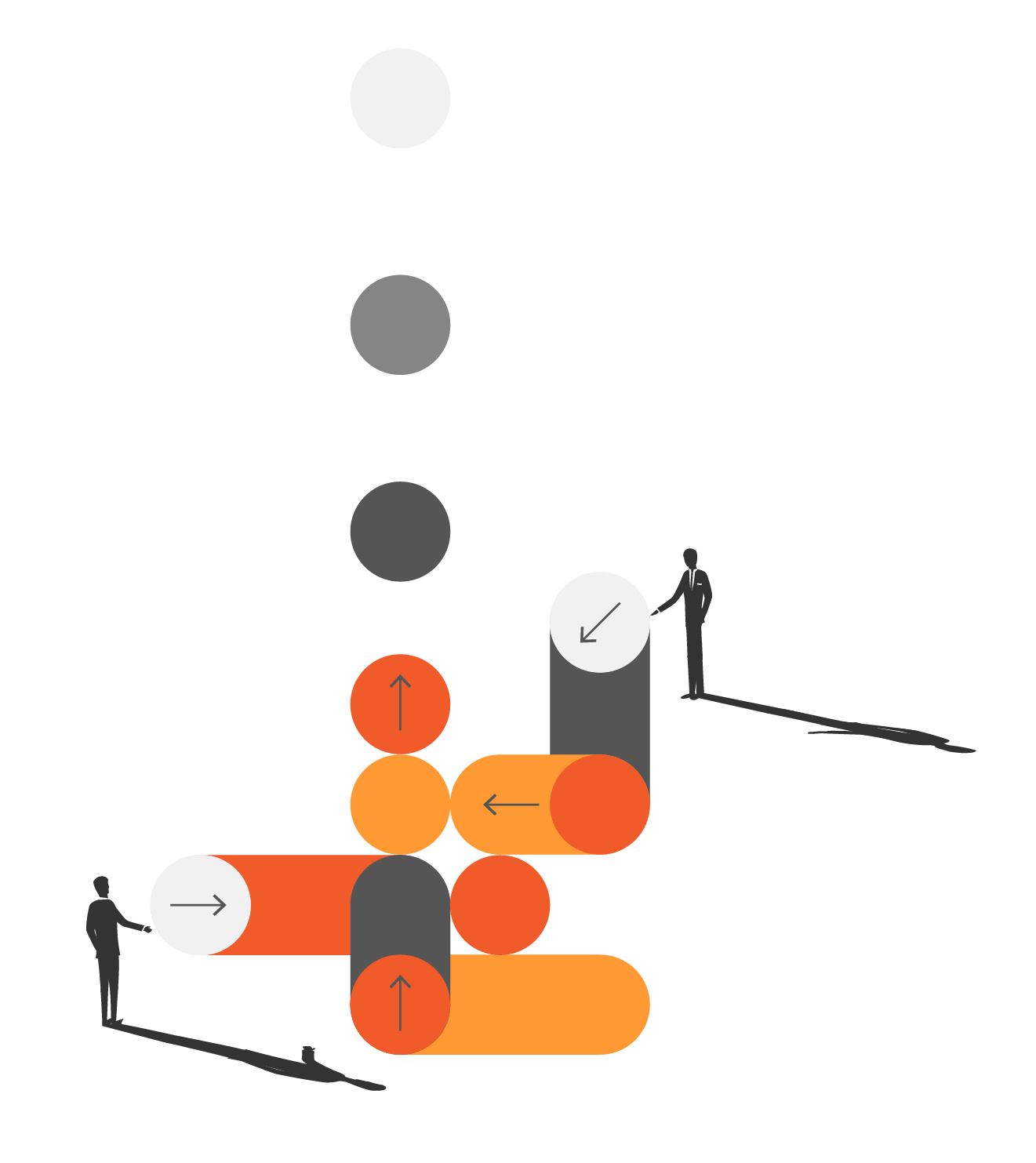The casual dining and fast casual restaurant industries have faced significant challenges, with many well-known brands struggling or closing locations. Reports highlight an industry in decline, citing closures and bankruptcies of chains such as Red Lobster, TGI Fridays, and Denny’s. However, not all chains are experiencing downturns—brands like Chick-fil-A, Texas Roadhouse, and Outback Steakhouse continue to grow, outperforming competitors in customer loyalty and financial success.
A study conducted by The Customer Obsession Advantage (COA) and Shikatani Lacroix Design (SLD) analyzed customer ratings from nearly 2,000 responses across 18 brands. The study sought to understand why certain restaurant chains maintain strong customer retention while others lose ground. The research identified four critical factors that influence customer loyalty, referred to as the Customer Obsession Practices:
- Meeting Customer Expectations Consistently – Customers expect restaurants to deliver on their promises. This includes providing a seamless experience from entry to exit.
- Empowering Employees to Solve Issues – Employees should have the flexibility to address customer concerns without bureaucratic constraints.
- Exceptional Food Quality – Great-tasting food is a cornerstone of customer satisfaction.
- Perceived Value for Money – Customers are more likely to return if they feel the price paid aligns with the quality and portion of food received.
TOP PERFORMER VS. STRUGGLING BRANDS
The study found that restaurants excelling in at least one of these four areas significantly increased their customer retention. Chick-fil-A, Texas Roadhouse, and Outback Steakhouse consistently ranked at the top in customer satisfaction and return rates. These brands focused on operational excellence, strong service culture, and food quality, leading to high Net Promoter Scores (NPS) and repeat business.
In contrast, brands such as Wingstop, TGI Fridays, and Starbucks ranked lower in customer loyalty and NPS. A 19-point gap between Chick-fil-A and Starbucks indicates that despite Starbucks being a part of customers’ daily routines, its lower performance on these key drivers has led to weaker retention.




THE IMPACT OF CUSTOMER OBSESSION ON REPEAT BUSINESS
The study revealed a strong correlation between high ratings in these four areas and increased repeat visits. Customers who rated a brand as “outstanding” on multiple customer obsession factors were significantly more likely to return within the next 12 months. The study’s data suggests that moving from poor to strong ratings in one category can double repeat visits, and excelling in two areas can nearly triple them. However, only 13% of customers gave top ratings in two categories, indicating substantial room for growth.
STRATEGIES FOR RESTAURANT CHAINS TO IMPROVE CUSTOMER RETENTION
The report outlines strategic approaches that casual dining and fast casual chains can implement to improve customer satisfaction and loyalty.
1. ENHANCING THE END-TO-END EXPERIENCE
- Every interaction, from ordering to farewell, should be optimized to create a seamless experience.
- Efficient management of wait times, order fulfillment, and staff interactions can significantly impact overall satisfaction.
- Physical factors such as ambiance, seating comfort, and layout also influence customers’ perceptions of a restaurant.


2. EMPOWER EMPLOYEES TO DELIVER BETTER SERVICE
- Employees should be trained and given the autonomy to solve problems promptly.
- Hiring individuals who align with the company’s service philosophy ensures a strong customer experience.
- Providing clear guidelines for handling customer issues can turn potential complaints into positive interactions.
3. IMPROVING FOOD QUALITY AND CONSISTENCY
- Taste remains one of the most critical factors for repeat visits.
- Ensuring that menu images accurately represent the food served can build trust with customers.
- Presentation, freshness, and consistency should be prioritized to reinforce the perception of quality.
4. STRENGTHENING VALUE PERCEPTION
- Customers judge value not only by price but also by the overall experience, service, and portion size.
- Offering competitive pricing within the category while maintaining portion sizes can enhance perceived value.
- Packaging and plating should reinforce the idea of high-quality offerings.


ADAPTING TO CHANGING CONSUMER BEHAVIORS
With evolving customer expectations, restaurant chains must innovate beyond the traditional dine-in experience. Digital engagement, mobile ordering, and delivery optimization have become essential components of modern food service.


1. Seamless Digital Experience
- Customers increasingly interact with brands through mobile devices. Ensuring a smooth online experience is critical.
- Features such as mobile ordering, easy payment options, and personalized recommendations enhance convenience.
2. Improving Curbside Appeal and Restaurant Layout
- First impressions matter. Clean, welcoming entrances and efficient pickup areas improve customer satisfaction.
- Separating online order pickup from dine-in services prevents confusion and enhances operational efficiency.
3. Optimizing Delivery Services
- Ensuring that food arrives in optimal condition is a major challenge for restaurants expanding into delivery.
- Using thermal packaging and setting geographic limits on delivery areas can preserve food quality.
- Custom-designed packaging for delivery can prevent issues such as soggy fries or poorly presented meals.
CONCLUSION
The COA/SLD study highlights that customer loyalty is driven by consistent execution in key areas. The restaurant chains that excel in delivering quality food, service, and value will continue to thrive, while those failing to meet these expectations will struggle.
By adopting a customer-obsessed mindset and focusing on seamless experiences, empowered employees, and consistent quality, restaurant brands can increase customer retention and long-term profitability. The key takeaway for struggling brands is that small improvements in just one or two of these key drivers can dramatically impact customer loyalty and business success.
DOWNLOAD OUR FULL REPORT BELOW FOR A COMPREHENSIVE REVIEW OF OUR STUDY RESULTS
About the authors


Jean-Pierre Lacroix
President of Shikatani Lacroix Design


B. A. Marbue Brown
Author of Blueprint for Customer Obsession and the Founder and CEO of The Customer Obsession Advantage
Author of Blueprint for Customer Obsession and the Founder and CEO of The Customer Obsession Advantage, a firm dedicated to helping companies drive exceptional business results through customer-centric strategies. Marbue Brown is a seasoned customer experience (CX) executive, he has delivered thought leadership and transformative outcomes at top companies like JP Morgan Chase, Amazon, Microsoft, and Cisco. His expertise has been featured in leading media outlets, including The Wall Street Journal, The Washington Post, USA Today, Fox Business, CNN Business, CBS News, Yahoo! Finance, Forbes, and Wharton Business Daily.


Dr. John Hughes
Chief Data & Analytics Officer at The Customer Obsession Advantage
Specializing in CX data, analytics, and insights, John Hughes is a trusted advisor to C-suite executives, he has guided leading companies like JP Morgan Chase, Microsoft, Verizon, PNC, Citibank, A&E, BET, Expedia, and Kodak in solving complex CX challenges. His expertise includes linking CX to financial returns, optimizing customer acquisition and retention strategies, developing meaningful KPIs based on voice-of-customer insights, and leveraging metrics for employee compensation and decision-making.

